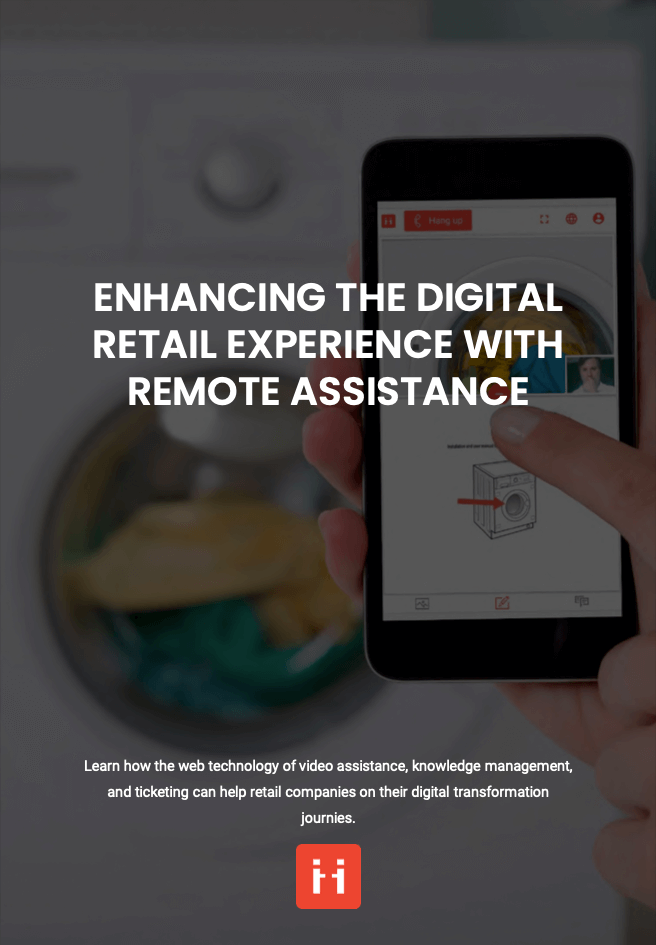
Share this article
Share this article
The COVID-19 crisis has massively disrupted the retail sector making remote customer service and satisfaction increasingly essential to provide. Safety concerns have become one of the top challenges for companies to tackle. 70% of consumers have stated that their concern for hygiene and sanitation is heightened. Both customers and companies are adapting to find new ways to resolve after-sales issues and effectively collaborate from a distance. With an elevated number of support requests, clients are solving simple issues on their own. Meanwhile, companies are offering omnichannel customer support options, and in particular, remote video conferencing support to maintain the human element of support.
The elevated rate of support requests is logical given the travel restrictions and health concerns around coming into contact with others due to Covid-19. Most people continue to be risk-averse, practising social distancing when possible. As a result, three-quarters of people do not want technicians to come to their homes unless it is absolutely necessary. However, 64% of consumers have become more willing to play an active role in the problem resolution process.
Covid-19 has created an environment where customers are looking for companies to use empathy and transparency in their remote customer service. Since the majority of sales moved from physical to digital experiences, the care aspect of the customer experience has also been transitioning to reflect this pattern. Customers need to believe that the companies they support will make responsible decisions.

By creating a comprehensive, empathetic, and digital care experience, companies are demonstrating that they prioritise the safety of their workers and customers. This remote customer service approach is necessary for inspiring loyalty and trust in the short- and long-term. Changing nothing is not an option for companies that want to survive the evolving retail landscape. 62% of consumers are stating that they would currently switch brands if they find another that demonstrates higher levels of product safety.
Customers are looking for the easiest and most convenient solutions as they try to navigate this new normal. However, unlike previous trends towards fast retailing, customers are also prioritising solutions that emphasise safe retailing. One of the ways to achieve this is through the use of video, which deepens relationships and builds trust as it maintains a human level of contact while ensuring safety.
Heightened concerns for health and safety have motivated companies to accelerate the creation of self-service kits, chatbots, and video assistance channels. These moves have afforded companies the opportunity to permanently scale virtualised services and reduce costs while enhancing both customer and employee safety. Creating omnichannel support options helps filter customer needs. This way, support agents are not overwhelmed, and customers do not have to wait in long queues to receive remote customer support.

Enhancing remote assistance options has proven successful without negatively impacting customer satisfaction. According to Benoit Lacayrouze, Sales Director of Decathlon and Domyos, “Customers are proud when they manage to repair their products, and business-wise, it saves money since sending technicians on-site is extremely expensive.”
Concretely, video conferencing solutions like ViiBE have tangibly enhanced the customer experience while making support operations more efficient. Mr. Lacayrouze elaborated on how they are working with ViiBE’s solution to enhance their remote customer service. “Currently, the feedback from customers and technicians is rather encouraging because the customer receives individualised treatment and the technician’s work is made easier because he or she can clearly see the product at the customer’s premises.”
As a result of the customers’ willingness to be more self-sufficient, as well as Decathlon’s flexibility to provide support channels like video conferencing, their number of home technical dispatches divided by 6 during the confinement period in France.
Customers are scared and need to know that the companies they support take health and safety considerations seriously. They’re more likely to buy from companies that have taken extra safety precautions than from those who put the workers’ health at risk to get their products sooner. Similarly, customers are stepping up to become more self-sufficient in after-sales services. Meanwhile, companies are facilitating this self-assistance by providing omnichannel assistance channels. For more complex problems, however, they are turning to video call solutions to provide individualised and empathetic remote customer support.

Free E-book available now!